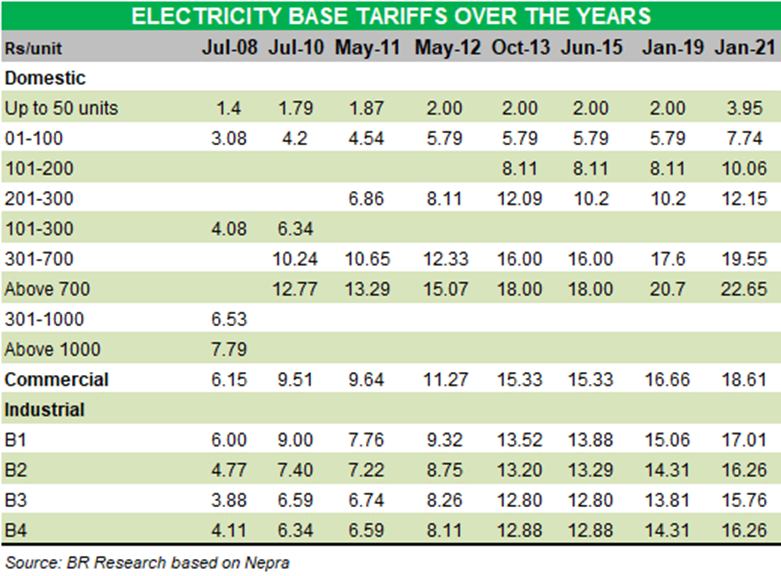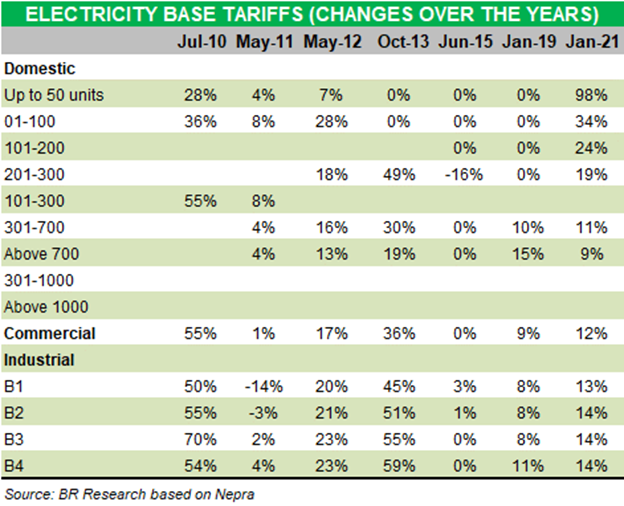The inevitable has happened. The Prime Minister had to give in having held back the power base tariff increase for almost a year, as the country was grappling with high inflation before Covid hit. There is very little that is surprising as it was a long time coming after previous year’s Covid and high-inflation inflicted delays.
Subject to notification by Nepra, the power base tariffs are all set to go up by Rs1.95/unit on an average – around 17 percent higher from January 2019. Recall that the last base tariff revision was done in January 2019, which gave an average base tariff of Rs 11.47 per unit. What remains unclear as yet is the treatment of the tariff increase across various consumer categories.
The notified base tariff for domestic consumers across various slabs averaged Rs9.62 per unit after the January 2019 notification. Assuming the price increase spares nobody (as hinted upon by the minister in the press briefing) the average base tariff for domestic consumers would be increased to Rs11.57 per unit or by 20 percent. However politically tough it may be, there is enough precedence of similar and higher magnitudes of price increase for the domestic sector in the last two tenures.

The Power Minister mentioned Rs2.18 per unit as the need for increase in base tariffs, which translated into Rs225 billion, as per the number of units used as tariff benchmarking in the last revision. The amount being increased leaves the government short of just Rs25 billion, which suggests the power budgeted subsidy will not be out of control.
Mind you, there are various other subsidies that are going on, and become part of the problem. The delay in settlement of subsidy amount then adds to the circular debt, as unfunded subsidy, arising from various support packages announced from time to time, has proved. But for simplicity sake, let’s assume all subsidy for power sector will be budgeted this time around.
What will matter the most is the inflationary impact of the price increase. Recall that the percentage increase in base tariff does not become the percentage increase in final tariff, as various surcharges, duties, quarterly adjustments, and monthly FCA become part of the final notified tariff.

The continuation or discontinuation of the previous slab benefit for domestic consumers will matter the most. This is where more revenue shortages arrive that are not always necessarily budgeted. The initial communication on the tariff increase lacks a lot of vital information, in the absence of which it would be guesswork at best to determine the exact impact on CPI.
But if the domestic consumers across categories are indeed subject to a uniform price increase or the slab benefit is taken away – make no mistake that the CPI impact would be sizeable. Here is also hoping the PBS deals with the price increase right way, especially if the slab benefit goes away. Here is a reminder that PBS does not take into account the fact that power bills are issued with one previous slab benefit. If that is taken away this time around, it will be more inflationary than what the PBS will arrive at. More on that and the impact on CPI, later.






























Comments
Comments are closed.